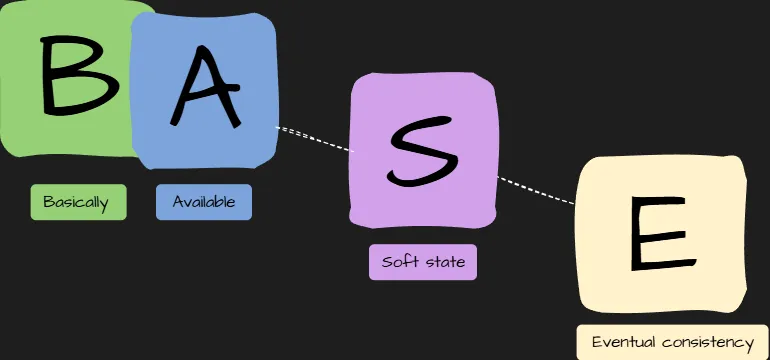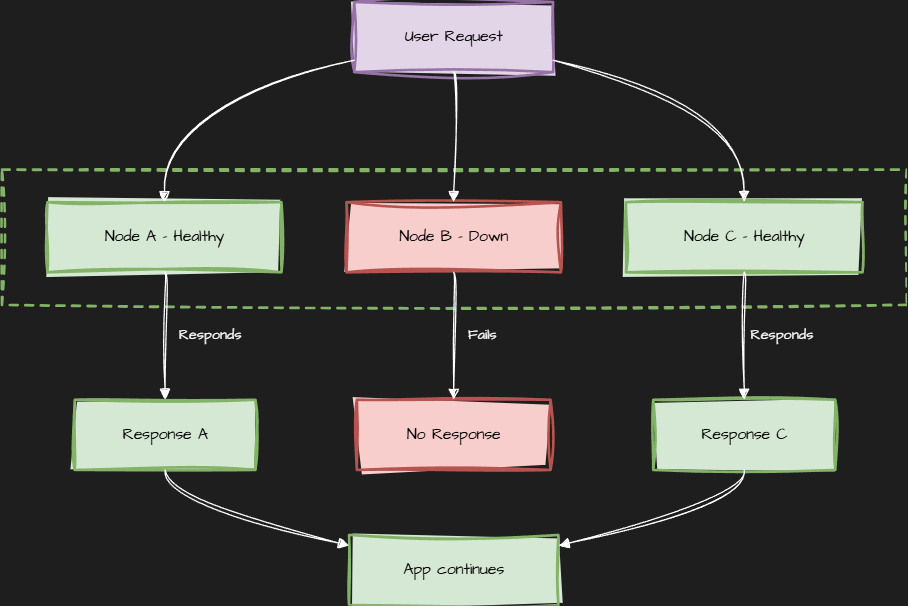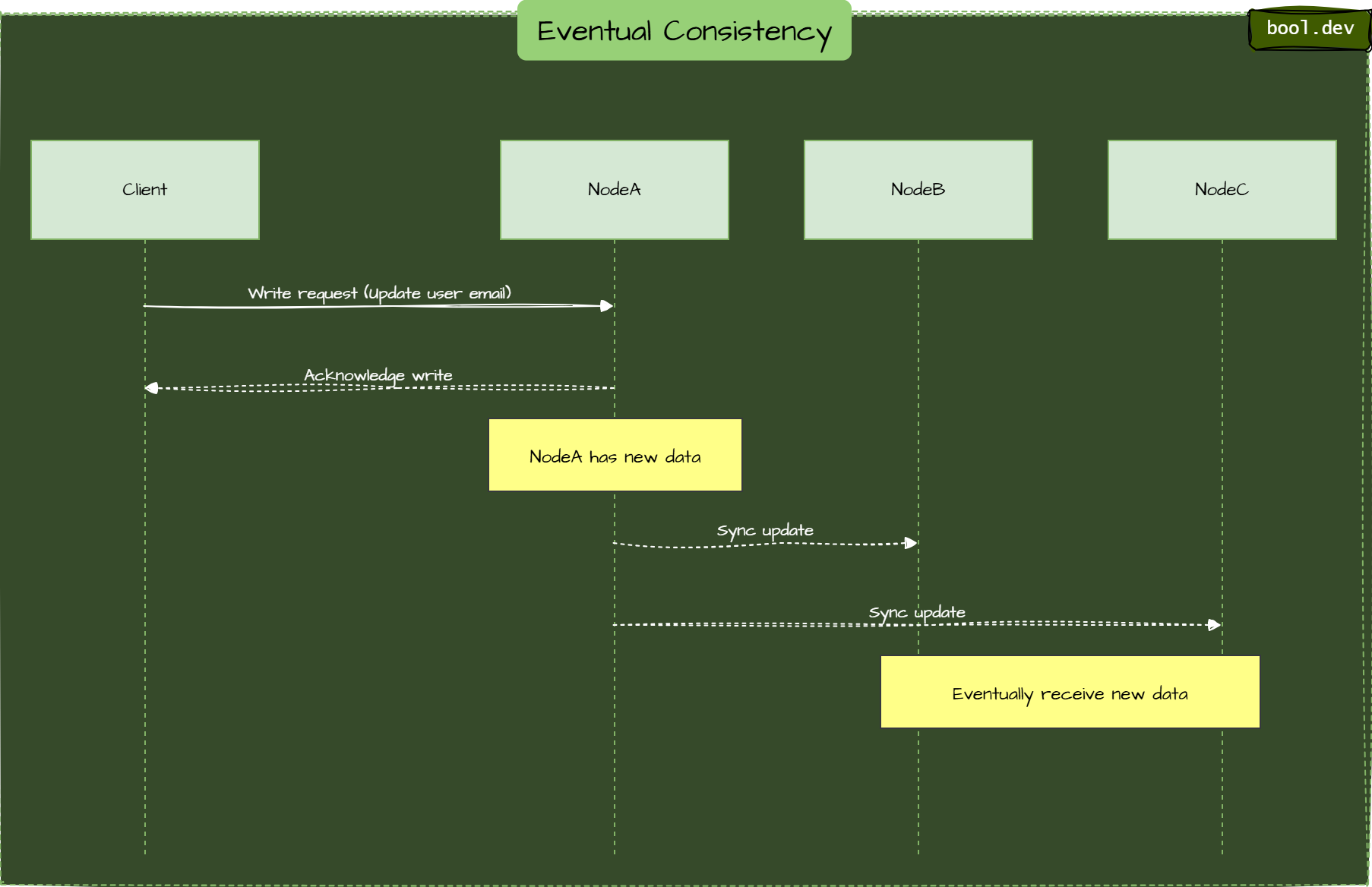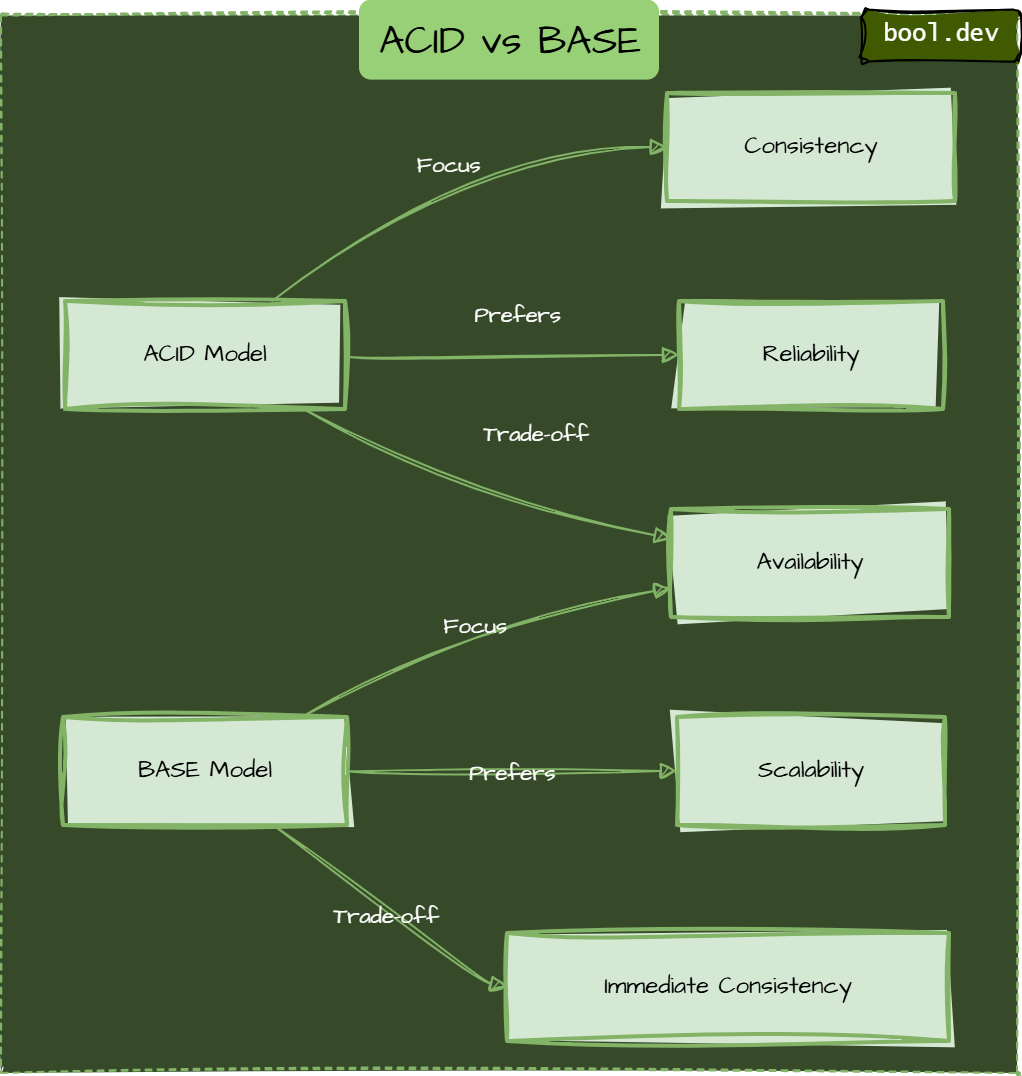BASE Model in NoSQL Databases

When working with databases, especially in distributed systems, you may encounter two essential terms: ACID and BASE. While ACID focuses on strict consistency and reliability (used in traditional relational databases), BASE is more relaxed, making it suitable for modern, distributed NoSQL systems.
What is BASE?
- Basically Available
- Soft state
- Eventual consistency
It’s a model used in distributed databases where performance and availability are more important than immediate consistency.
Basically Available

The system always responds, but the response might not have the most up-to-date data.
Basically Available Example:
On an e-commerce site, even if one backend service is down, users can still browse and place items in their cart. The system stays responsive, even if it's not 100% current.
Soft State

The system's state can change over time without new input, because nodes may be syncing in the background.
Soft State Example:
Two servers might store the same data slightly differently. Over time, they’ll align—until then, the state is “soft.”
Eventual Consistency
The system doesn't guarantee immediate consistency, but all data will become consistent eventually.

Eventual Consistency Example:
You change your profile picture, but it takes a few seconds before everyone sees the update. That’s eventual consistency in action.
BASE vs ACID – What’s the Difference?
| Feature | ACID (Traditional DBs) | BASE (Distributed Systems) |
|---|---|---|
| Availability | May sacrifice availability | High availability |
| Consistency | Strong, immediate consistency | Eventual consistency |
| Scalability | Harder to scale | Easy to scale |
| Use case | Banking, transactions | Social media, big data apps |

